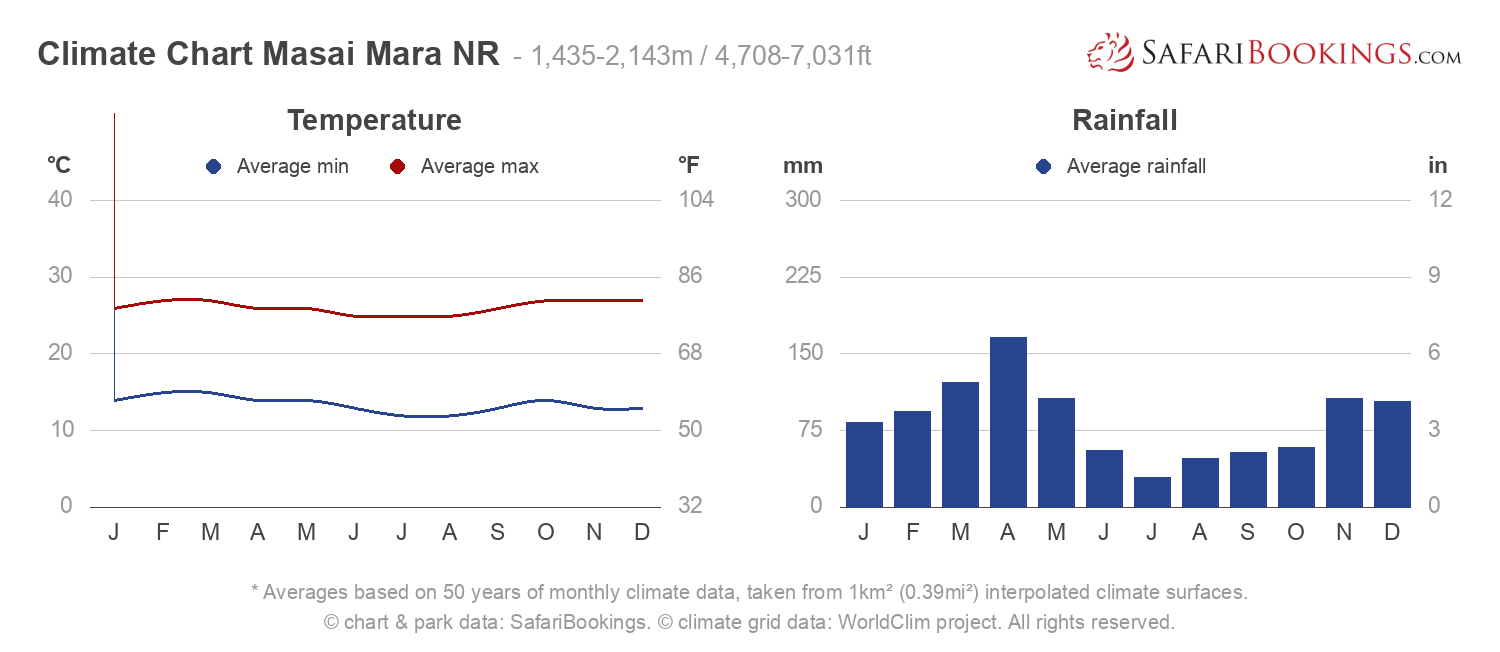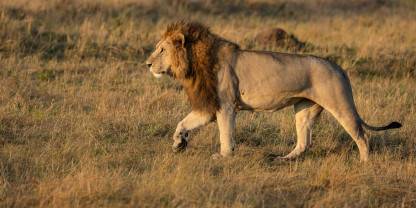
Climate Chart Masai Mara National Reserve – 1,435-2,143m / 4,708-7,031ft
Due to the altitude, the climate in Masai Mara National Reserve is slightly colder and wetter than might be expected this close to the equator. Daytime is pleasant with temperatures in the mid to high twenties Celsius (mid seventies to low eighties Fahrenheit), while it cools off significantly at night.
Dry Season June to October
This is an enjoyable time to be in the park with lovely weather. Typically there are sunny days and it’s rarely very hot. Don’t forget to pack warm clothing for early morning .
- June, July & August – It can still rain, but mostly it is sunny and dry. Afternoon temperatures reach an agreeable 25°C/77°F, but the cold can hang around in the evenings and early mornings when temperatures of around 12°C/54°F are common.
- September & October – Still a dry time of the year, although rain is possible some days. Temperatures increase slightly in October and hover around 27°C/81°F (and higher). Chilly early mornings persist (around 14°C/57°F).
Wet Season November to May
There are many overcast, cloudy days. Afternoon showers are the norm. Daytime temperatures don’t vary much. Early mornings have temperatures around 14°C/57°F. Bring warm clothing.
- November & December – ‘Short rains’ – The rains normally break at some point in November. Average afternoon temperatures are around 27°C/81°F.
- January & February – Rainfall eases between the short and long rains, although showers do still occur. The exact timing of this drier period is somewhat challenging to predict.
- March, April & May – ‘Long rains’ – April is the wettest month. It doesn’t often shower all day, but rainfall is regular, usually in the form of intense afternoon storms. Tracks might become slippery and difficult to navigate. Early mornings are a bit warmer with average temperatures around 14°C/57°F.

